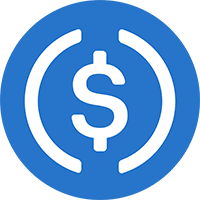
Do you want to know: What is Proof of Authority?
Luckily, you arrived at the top site explaining that, with a top list for the leading Proof of Authority (PoA) coins and tokens below.
Essentially, Proof of Authority (PoA) is an algorithm that cryptocurrency blockchains use to make faster transactions. It’s known for its speed and energy efficiency. To maintain legitimacy, all parties must agree on the state of the blockchain and ownership of its assets.
Agreements are possible due to consensus mechanisms such as PoA. The two original mechanisms are Proof of Stake (PoS) and Proof of Work (PoW). Respectively, they base agreement on how much of a financial stake operators have in the blockchain, or verification through use of computer resources, known as mining.
Conversely, PoA is based on identity, where approved computer nodes validate transactions and protect blockchains, overseen by vetted system moderators, called validators. Learn more below about how PoA work or check out the top list of the best PoA coins and tokens.
This is the toplist with proof of authority coins and tokens for people in United States. There may still be restrictions what people in the your geographic region are allowed to do when it comes to crypto currencies. So make sure that you read up on the regulatory restrictions as well as the terms and conditions for each crypto exchange and consider what is allowed or not allowed. Crypto is extremely volatile and not suitable for everyone to invest in. Never speculate with money that you cannot afford to loose.
The following blockchains use the consensus method Proof of Authority:
Cronos Chain, BNB Beacon Chain, VeChain and Zenith Chain.
Essentially, PoA differs from its predecessors by ensuring that the validators’ reputations form the basis for the blockchain’s validity. Crypto mining time lies behind the validity of PoW validity. Finally, PoS relies on the amount of coin that people are willing to invest. All of these are reasonable ways to invite consensus and validate the database.
However, like any consensus process, both PoA and PoS algorithms have advantages and drawbacks. Cryptocurrency operators usually find that some fit their trading or business needs better than others.
PoA algorithms simplify validation and lower the amount of energy needed to run the network. This has many advantages, not least of which is reduced costs for operators. PoA accelerates the rate at which authorities validate transactions. Due to the predictable creation of blocks based on the number of validators, the blockchain records a higher transaction rate than both PoS or PoW.
Nevertheless, using the PoS consensus mechanism promotes decentralization, a key tenet of crypto, by allowing individual involvement in network security. The widely-distributed nature of the consensus prevents monopolization of the platform by individual interests. Conversely, PoA platforms maintain higher levels of control and efficiency. This makes them more suitable for large companies or private networks.
Validators group transactions into blocks, using software. Due to automation, validators are freed from the requirement to continuously keep an eye on their computers. However, they must ensure that their machines are working properly at all times and safe from outside attacks.
Generally, the process to approve an individual as a trusted validator follows the same basic criteria, although details vary between systems. Their peers should consider them reputable, trustworthy, with no criminal record. They should have a verified identity and must be prepared to stake investments on their reputation.
Individuals selected as validators are highly incentivized to maintain the highest ratings, which are indelibly tied to their reputations. Essentially, this means keeping the transaction process as fast, stable and secure as possible.
Which PoA coins and tokens can be staked?
VeChain (VET)
Xodex
POA (WPOA)
Following is the list of benefits of PoA.
PoA platforms do not require the quantity and quality of computational power as other consensus types. For example, in comparison with PoW, machines don’t need to spend time and energy cracking difficult mathematical tasks.
PoA networks generally use fewer validators than PoS blockchains, speeding up the settlement of transactions and the execution of smart contracts.
They make a higher number of transactions per second because validators ensure the platform creates blocks in sequence at set intervals.
PoA-based algorithms are more environmentally friendly than PoW ones, since validators don’t compete to find block hashes. Additionally, they don’t need power or processor cycles to determine the correct hash for each block.
PoA can achieve higher levels of efficiency when compared to alternate consensus mechanisms that employ cryptographic hash functions. As opposed to stricter hardware and software limitations, high bandwidth speeds the flow of transactions. Consequently, costs stay fixed rather than reacting to market conditions.
PoA also offers improved Byzantine Fault Tolerance as compared to typical centralized systems that don’t use a distributed consensus technique.
After discussing the benefits of PoA, it’s only fair to examine potential drawbacks.
The fact that validators are preapproved makes for a more centralized process. Moreover, the main goal of the PoA model is to increase the effectiveness of centralized systems. Therefore, PoA systems are more prone to filtering and blacklisting.
The public identity of PoA validators is a potentially serious issue. The argument goes that their visibility ensures that they perform in the general interest, while critics claim that such visibility leaves the platform open to unwanted influence from outside.
Human error is more likely, because the construction of the blockchain relies less on automation. Many network users and developers enjoy the decentralized nature of PoS or PoW solutions. However, it is not a key concept with PoA.
Due to the fact that public blockchains are not truly decentralizing systems, they may not be the best option for PoA worldwide. An alternative is to use private networks.
The Proof of Authority design does not enjoy the same level of popularity as the PoS or PoW architectures that underpin Ethereum and Bitcoin, respectively.
The main reason that PoA is not attractive to the majority of non-enterprise apps is that public blockchains require less reliability. This lies in contrast to PoA, which requires users to trust both validators and authorizers.
FAQs
Is PoA better than PoS?
PoA is the best solution in terms of security and energy usage, as opposed to PoS and PoW, which both have high power requirements and more security weaknesses. However, PoA works better with large companies or private organizations that want to use permissions networks, since it is a more controlled approach to maintaining consensus on a blockchain network.
How much electricity does PoA require?
PoA platforms operate using far less energy than other types. Previous forms of consensus mechanism have required large numbers of computers, with impressive hardware, in order to carry out the serious number-crunching needed for crypto mining. In contrast, PoA platforms don’t need high-end computer power and so use far smaller amounts of electricity.






























